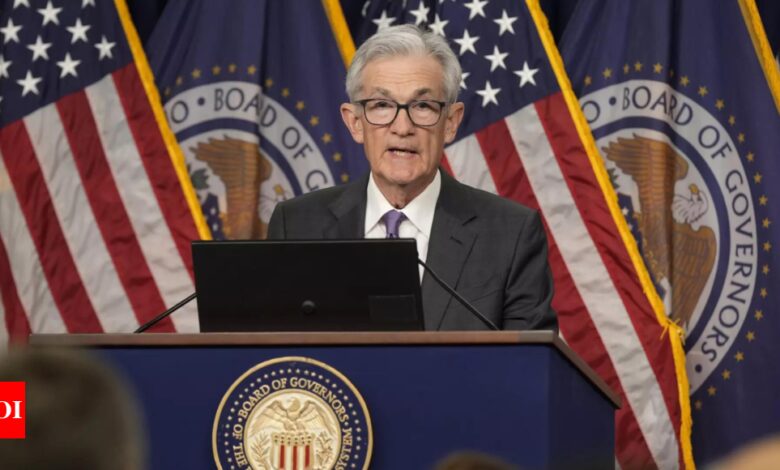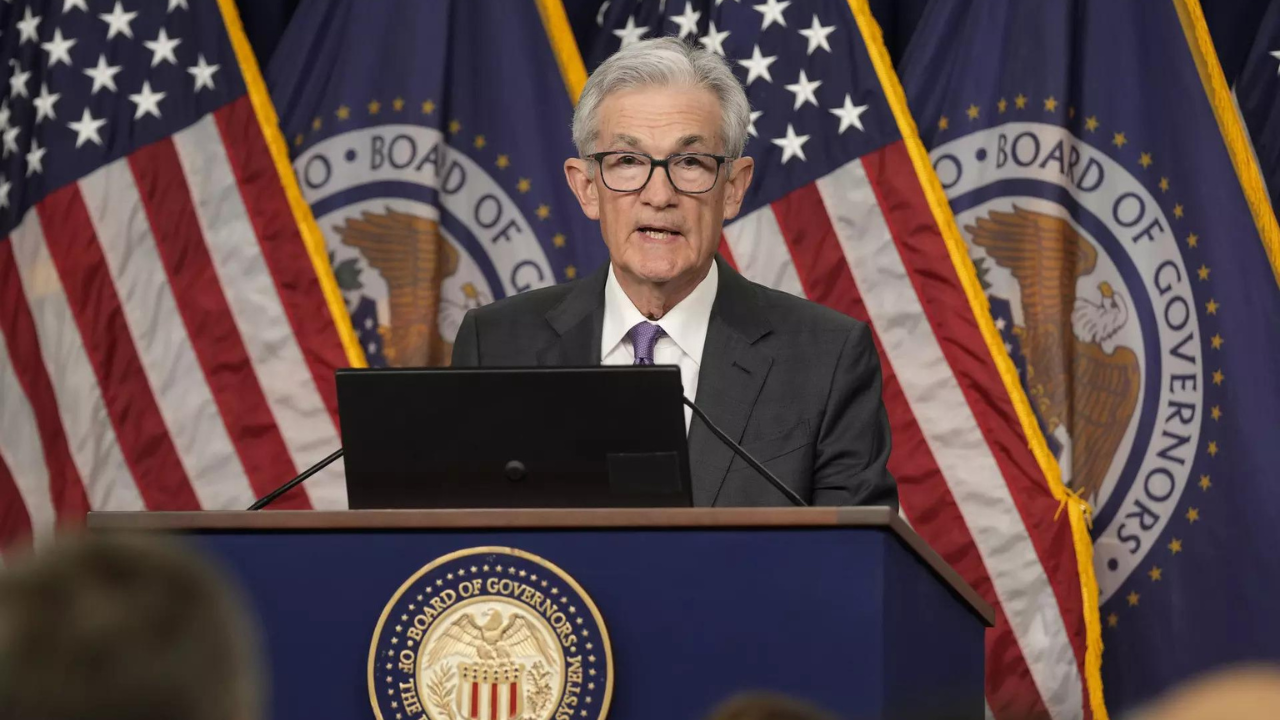Federal Reserve plans three rate cut this year; lending rate remains unchanged for 5th time

[ad_1]
Officials further said that they intend to slash the key interest rate three times in 2024, despite higher-than-expected inflation at the beginning of the year.
Initially, they had projected four rate cuts this year. Additionally, the officials expect fewer rate cuts in 2025 and have slightly raised their inflation forecasts. The forecast now includes three rate cuts in 2025.
Fed officials, in their latest quarterly projections, predicted continued strong growth and persistent inflation in the current and upcoming year. Furthermore, they anticipate that interest rates will need to remain slightly higher for a longer duration.
US Federal Reserve chair Jerome Powell said that inflation has cooled considerably. However, he said, “inflation is still too high, ongoing progress in bringing it down is not assured and the path forward is uncertain. The risks are really two-sided here. We’re in a situation where if we ease too much or too soon, we could see inflation come back. And if we ease too late, we could see unnecessary harm to employment.”
US Fed also project ‘core’ inflation, excluding volatile food and energy costs, to reach 2.6% by the end of 2024, up from the earlier projection of 2.4%. In January, core inflation stood at 2.8%.
Overall, the forecasts predict that policymakers anticipate a strong economy, with a robust job market and gradual ease of inflation at a slower pace than predicted three months ago.
“The committee judges that the risks to achieving its employment and inflation goals are moving into better balance,” the Federal Open Market Committee said Wednesday.
Economists have identified the Fed’s June meeting as a probable occasion for announcing the first rate cut, marking a reversal of the 11 hikes implemented over the past two years. These hikes have contributed to reducing annual inflation from a peak of 9.1% in June 2022 to 3.2%. However, they have also led to higher borrowing costs for businesses and households.
Rate cuts, over time, are expected to lower costs for various loans such as home mortgages, auto loans, credit cards, and business loans.
Consumer prices surged from January to February, surpassing the Fed’s target range. Wholesale inflation was also at higher than expected levels, indicating possible inflationary pressures that could fuel increased consumer prices.
Jerome Powell and the committee members are analyzing the impact of these figures on their timetable for reducing rates. The key consideration is whether the rates have been maintained at a sufficiently high level to effectively address inflation.
While consumer inflation has moderated since mid-2022, it remains above 3%, with service costs like rents, hotels, and hospital stays staying higher in early 2024 which indicates that they have not been effective in curbing inflation in the service sector.
The Fed’s rate hikes primarily makes borrowing homes and cars costly, with limited impact on services spending that typically does not involve loans.
The central bank faces the risk of prolonged high borrowing costs weakening the economy if rate cuts are delayed. Powell cautioned about this possibility during his Senate Banking Committee testimony, expressing confidence in the ongoing slowdown of inflation.
Despite strong US economy with ongoing hiring and low unemployment rates, consumer prices remain significantly higher than pre-pandemic levels, causing dissatisfaction among many Americans.
Indicators suggest a potential economic slowdown in the coming months, with a slowdown in retail spending in January and February, and a slight increase in the unemployment rate from its historic lows.
Central banks globally are maintaining high rates to manage consumer price increases. In Europe, there is pressure to lower borrowing costs as inflation eases and economic growth stagnates. The European Central Bank and the Bank of England are contemplating rate adjustments in response to these trends.
However, the Bank of Japan recently raised its benchmark rate for the first time in 17 years due to rising wages and inflation approaching its 2% target.
#Federal #Reserve #plans #rate #cut #year #lending #rate #remains #unchanged #5th #time






